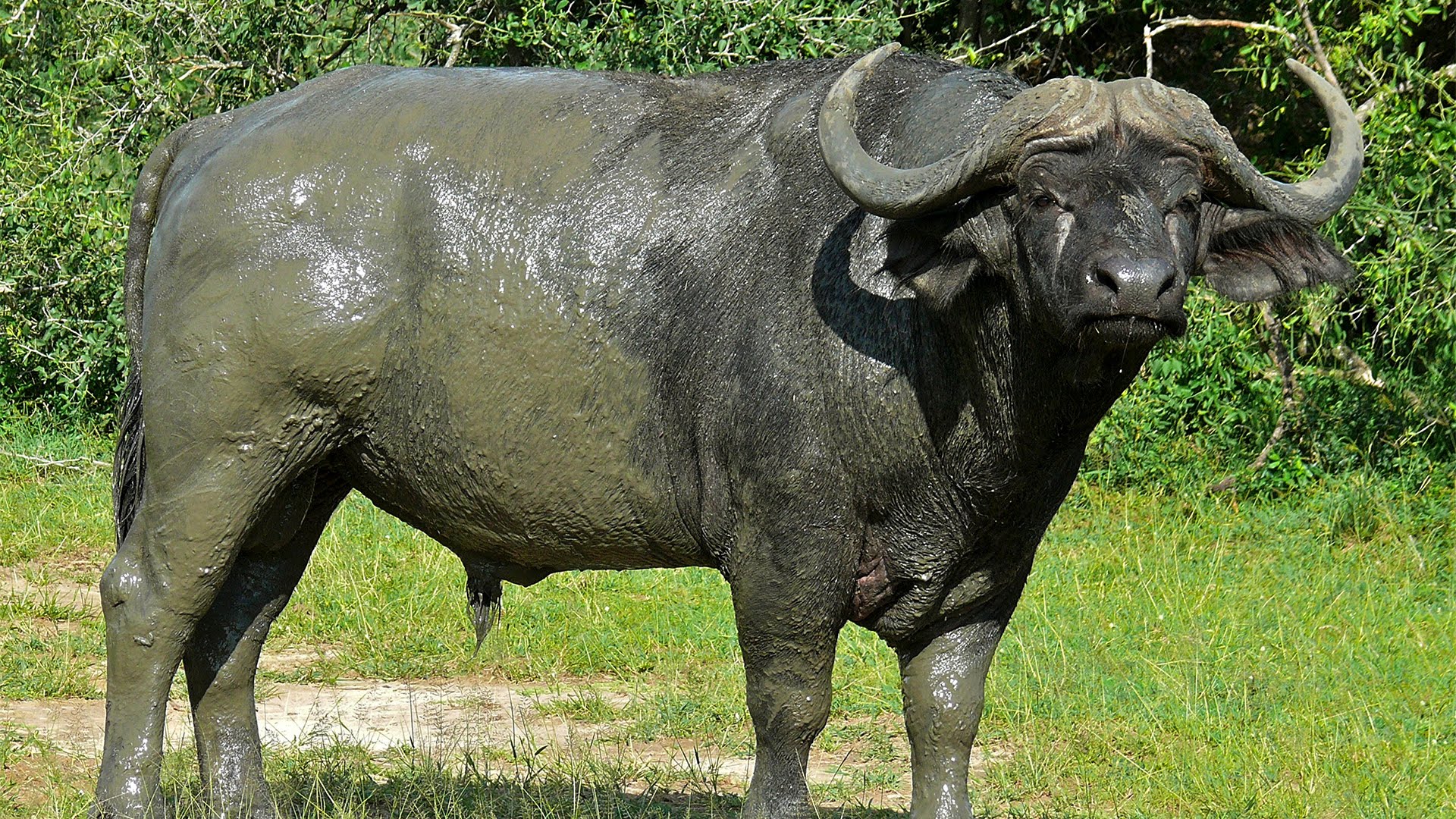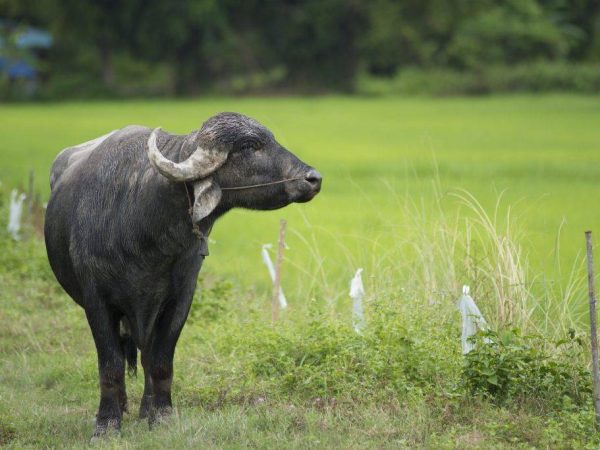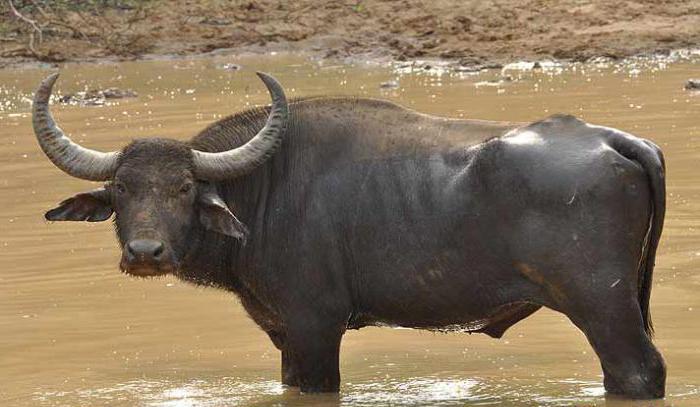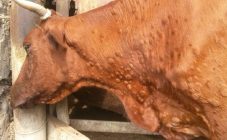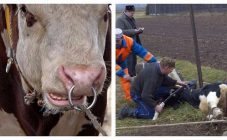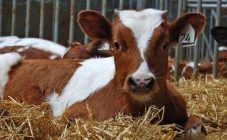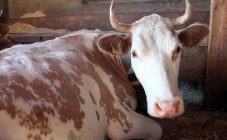Content:
Many have heard of animals such as buffaloes at least once in their lives. But what is the difference between a buffalo and a cow? They are distinguished from the usual domestic bulls by their body size and massiveness, as well as huge horns. This mammal belongs to the group of artiodactyls and is divided into several species. So, there are African, Indian buffaloes, as well as dwarfs, which are called anoa.
Many farmers are wondering who is stronger - a bull or a buffalo? But the fact that the representatives of the African buffalo species are considered to be the most dangerous animals inhabiting Africa speaks for itself. At first glance, it may seem that these animals do not pose a great danger, but if you study the statistics, you can see that because of them many African inhabitants died. On this list, buffaloes are second only to the Nile crocodile and hippo.
Who is a buffalo: general information
As mentioned above, buffaloes form two species - African and Indian. As for the Indian buffalo, the usual halo of its habitat is northeastern India, the Klondike, as well as some regions of Sri Lanka, Malaysia and Indochina.
African, on the other hand, lives in places where reed thickets, swamps and water bodies prevail, but you can also find it in mountainous areas. It is the buffalo that is considered the largest wild bull, because its height reaches 2 m, and its body weight is more than 1 ton. The main distinctive features of this animal include the following:
- Massive animal body;
- The color of the stocky legs of the buffalo takes on a white tint from top to bottom;
- The head is in the shape of a rectangle and is set on a wide neck;
- Buffalo horns reach 2 meters in length, they bend upward, forming a semicircle, or diverge in two directions in an arched shape. In cross-section, it can be seen that the horns are triangular in shape;
- Life expectancy is 16-20 years;
- It has a rather long tail, at the end of which there is a stiff brush.
The color of the coat depends on the subspecies of the animal. The South African representatives have a black coat, and as the animal grows, the color turns dark brown. Old individuals can be identified by the presence of white circles near the eyes. Females are distinguished by a dark brown coat color.
The horns of this animal should be given special attention, because they are quite unusual. At the base, they grow together, due to which a solid bone shield is formed, which cannot be shot with a pistol, because the bullet will simply bounce off. The distance between the two ends of the horns is 1 m. It is worth noting that the horns of females are not as large as those of males, and they do not grow together.
Interesting Facts
Buffaloes are a symbol of savannah's wild virginity and power. In the role of mighty idols, they roam the territory of Africa, admiring and arousing the respect of both locals and tourists. If a predator attacks a herd of buffaloes, then the animals will in no case leave their fellow tribesman in trouble, together they will fight to the last.For those who are going to breed cloven-hoofed animals at home, some interesting facts about these majestic animals may seem fascinating.
- The buffalo attacks its enemy with horns, using them as a weapon that can easily rip open the stomach of even such a dangerous predator as a lion. After the enemy falls to the ground, the buffalo will trample on it for several more minutes, until there is practically nothing left of the predator;
- Buffaloes are also attacked by small parasites, such as buffalo cicadas, which feed on the animal's blood and harm it. Ticks and gadflies bite through the thick skin of a buffalo, and only drag birds, which often live on the back of an ungulate, pecking out all parasites, are able to help them out;
- Many people wonder what the name of the female buffalo is and how long it takes to bear a cub. The buffalo pregnancy lasts for 12 months, after which she gives birth to a baby buffalo, with fluffy brown fur.
Breeding and general rules for caring for buffalo at home
The conditions for keeping African buffaloes are as similar as possible to ordinary cows. For their life, they need an ordinary cowshed, they graze in the same meadows and differ little from a cow. But among pastoralists there is a controversial opinion about what kind of character buffaloes have.
Some consider buffaloes to be capricious and, to some extent, even aggressive: they allow only one owner to approach them, who will milk them. Some say that buffaloes are more pliable than cows, and are able to attach to their owners even more than four-legged friends - dogs.
You can feed a domesticated Indian buffalo with low-value and roughage that is unsuitable for ordinary cows. For example, these animals can be fed with corn stalks and straw. You need to graze animals in a forest or swampy pasture, where there is a lot of coastal vegetation. Buffaloes willingly eat sedges, ferns, reeds, needles and nettles.
Swampy terrain is ideal for raising this breed, while normal cattle (cattle) feel uncomfortable in such a place. If there is a river or swamp next to the pasture, the animal will willingly flee there from the summer heat. It is generally accepted that these horned ones are able to tolerate cold well, but given the fact that they have a southern origin, it is strongly not recommended to abuse this property. In areas where winters are severe and frosty, the construction of a capital barn will be needed to breed the animal.
On the territory of Russia, domestic buffaloes are bred in the North Caucasus Federal District, namely in Dagestan. Here ungulates are bred by local people who use ungulates as draft animals. There are practically no large farms engaged in breeding these animals. Outside the territory of Dagestan, only inveterate enthusiasts are engaged in breeding buffaloes.
Advice and guidance from experienced breeders and veterinarians
Experienced breeders are advised to familiarize themselves with the disadvantages and advantages of these animals before starting to breed buffaloes.
Traditionally, cattle are considered to be ordinary cows and bulls, but domesticated buffaloes are also considered farm animals. If we compare the advantages and disadvantages of bison versus an ordinary cow, then several key points can be distinguished. So, the obvious advantages of ungulates are presented:
- The high fat content of buffalo milk, which is 8%, but if you follow certain feeding rules, you can achieve an indicator of 10% or even more. It is also worth noting that buffalo milk has a high calorie content and benefits;
- Unpretentiousness in relation to feed. You can feed the animal with cheap and raw roughage, which is not suitable for ordinary cows. They eagerly eat straw, which greatly simplifies their maintenance, especially in winter;
- Strong immunity. They are not afraid of various infectious diseases, unlike other cattle.
Domestic individuals are also distinguished by low milk yield. If you provide similar conditions of maintenance and care, buffaloes will still give 3 times less milk than ordinary cows. After reading the numerous reviews of pastoralists who have experience in breeding buffaloes, we can conclude about the complex nature of ungulates. These animals are characterized by capriciousness and willfulness, which cannot be said about cows.
Buffalo is a rather rare occurrence in the agricultural industry in Russia. But, if a farmer wants to diversify his livestock with such animals, he should find out about the conditions for the care and feeding of this animal in advance.
